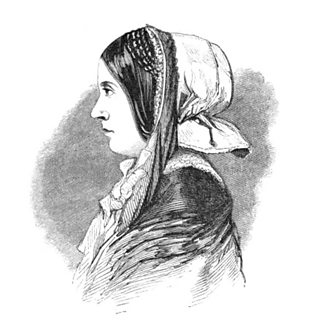The scandalous story of Victorian Scotland’s high society poisoner
9 July 2017
On 9 July 1857, one of Victorian Scotland’s most notorious murder trials ended in controversy as a verdict of ‘not proven’ saw suspected poisoner Madeleine Smith walk out of court a free woman.

A member of Glasgow’s genteel high society, the nation was scandalised by the shocking details of Madeleine’s behaviour.
Against all rules of Victorian decency she had embarked on a passionate relationship with, horror upon horror, a man of the lower classes. And then, to top it all, she was charged with his murder.
In 1855, aged 19, Smith had returned to Glasgow after finishing her education in London and met Pierre Emile L’Angelier, a lowly clerk from Jersey. Smitten, the two became lovers, meeting in secrecy and writing each other candid letters.
Two years later, however, Madeleine’s affectations cooled and she became engaged to another far more suitable young man. In February 1857, Smith begged L’Angelier to return the incriminating letters fearing that they could ruin her reputation. A heartbroken and jealous L’Angelier refused.
By March of that year he was dead from arsenic poisoning.
The discovery of the letters – and a receipt for the purchase of arsenic – saw Madeleine charged with murder. Her trial became the sensation of the year but her stylish and assured composure in court won Smith a legion of admirers.
Such was her notoriety that, following her release, Smith left Scotland for an anonymous life in London. After a failed marriage, she eventually moved to New York and married again. She died in America in 1928.
Madeleine’s story went on to inspire several plays and films and also the Wilkie Collins novel .
±«Óãtv ALBA on the case of Madeleine Smith

Seo sgeulachd a tha là n feise, dubh-chìs agus murt
Here is a tale that is full of lust, blackmail and murder.
Latest features from ±«Óãtv Scotland
-
![]()
'Wild swimming helps me process the grief of losing my son'
The benefits of cold water therapy.
-
![]()
Winter adventures are appealing, but an expert advises caution
Trips in winter require particular knowledge and skills.
-
![]()
The rescuers: Why volunteers risk their lives in mountain emergencies
Landward meets members of the Cairngorm Mountain Rescue Team.
-
![]()
‘Look for the light’ – practical tips to help you through another winter with SAD
Useful advice and tips to combat low moods at this time of year.
-
![]()
How you could be a binge drinker without even knowing
Binge drinking is classed as fewer units than many people may realise.
-
![]()
How chocolate biscuits and drama classes helped one man leave prison behind
The healing power of creativity.
-
![]()
'When people believe in you, it’s life-changing'
Author Graeme Armstrong revisits the man who helped turn his life around.
-
![]()
The 'breath-taking' display of US birds swept on to British soil
Recent storms have brought rare birds to our shores.
-
![]()
Six things we learned about Alan Cumming on Take the Floor (Spoiler: includes accordions)
The actor spoke to Take the Floor's Gary Innes.
-
![]()
How street gangs trap young men in a dangerous cycle of violence
The almost inescapable pull of life in a gang.
-
![]()
Why stylist Gok Wan believes there's no such thing as bad fashion
The fashion expert says we should stop following rules and do what feels right.
-
![]()
Is sending a CV still the right way to apply for a job?
They've been central to job applications for years, but are they worth it?















